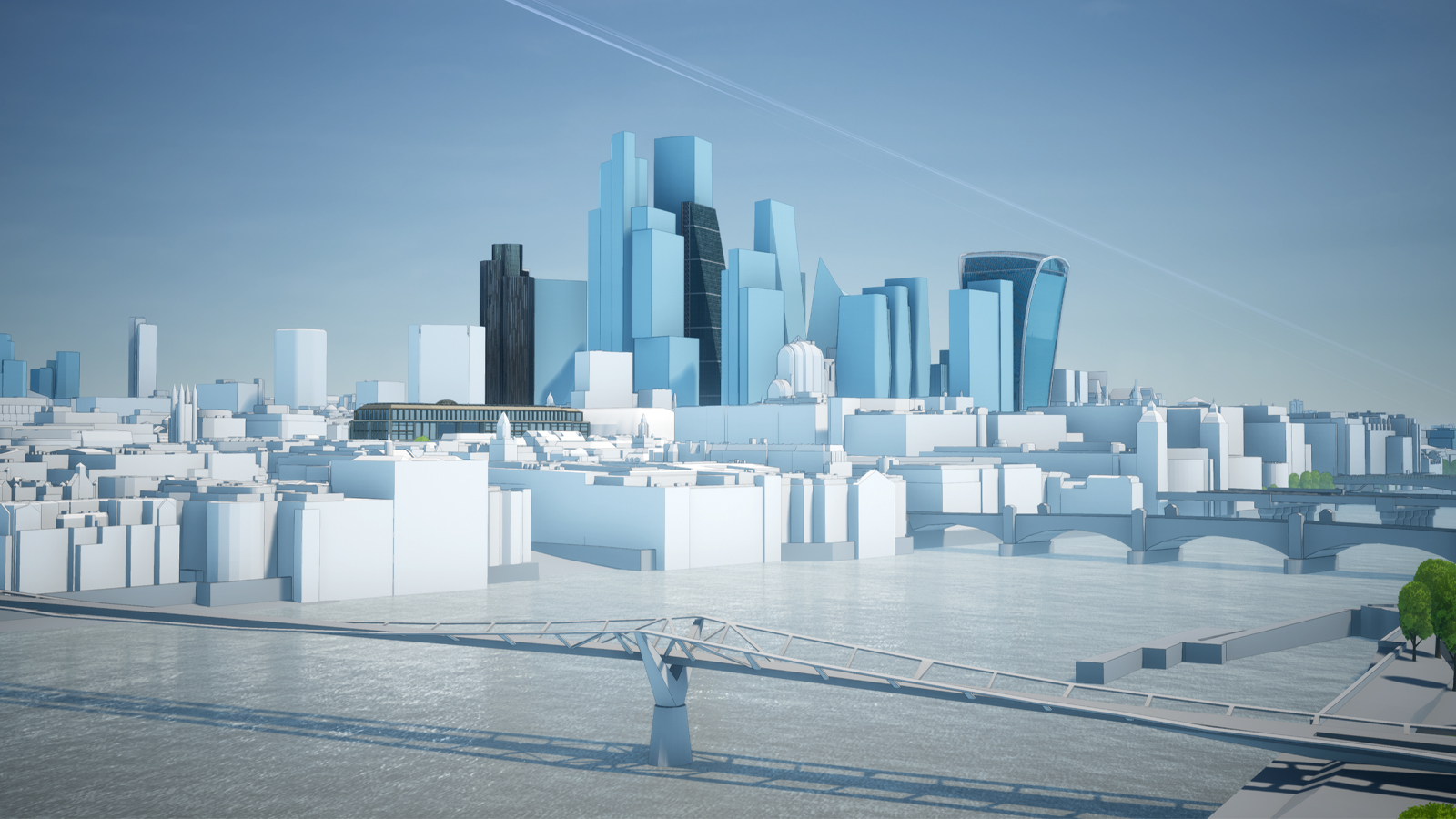%20Edward%20Tuckwell_Game%20on_Modus_July_2021?$article-big-img-desktop$&qlt=85,1&op_sharpen=1)
Illustrations by Edward McGowan
Digitisation enables rapid change and means the architecture, engineering and construction (AEC) market can address global trends including sustainability, resource scarcity and the climate crisis more readily.
However, McKinsey has described the sector as one of the last to digitise, with large projects often up to 80% over budget and 20% over deadline. Massive amounts of data are available from design and construction plans, sensor networks, laser scanning and drone data but such data needs to be properly managed to be useful.
Digital twins
It is this potential for modelling that makes the concept of a digital twin so exciting – technology has taken the BIM model to a new level, adopting a cloud platform-based unified data model for collaboration and innovation. This allows real time data to be integrated, which in turn enables streamlined design, engineering and construction. BIM does not deal in real time operational response (such as how the building interacts with people and its environment) but can provide the data for a digital twin, which does.
Digital twins can show how people interact with built environments and can be used at every stage of the design, engineering and construction process. They can also simulate how systems and people react to change, to monitor and optimise building usage. It can create robust data models about all aspects of a building, asset or city throughout its life cycle.
These modelling, simulation and analysis capabilities enable the user to visualise a concept and test out hypotheses in the virtual world. They can also be used to simulate the impact of operational, environmental and even financial data on large scale construction projects – meaning the performance of buildings and infrastructure can be optimised in real time, problems identified and solved. That real time data provides actionable insights, helping inform business strategies and improve day-to-day activities on an individual building project or across a whole city.
%20Atelier%20Ten_Game%20on_Modus_July_2021.jpg)
Singapore-based infrastructure and urban development consultancy Surbana Jurong has been using this approach for engineering design. Its managing director for technology and research, Dr Raj Thampuran says: “Sensors allow us access to the heartbeat of these systems and allow us to interact for optimisation – it provides intimacy with engineering.” There are multiple use cases, ranging from using integrated delivery patterns for Circular Quay in Sydney to creating a masterplan for the city of Kigali in Rwanda.
The way that digital twins allow individuals to interact with data is increasingly important. Rich Humphrey, vice president of construction at Bentley Systems says: “The way we’re accessing data is changing. Instead of having a list of data points that required a database query in a list view to find information, data can be quickly found within a live 4D model.
There is also more data than ever available to inform decision making. “The majority of buildings today are dumb containers,” says Philip Ross, chief executive of Cordless Group. “Tomorrow they’ll be smart. The building itself will become intelligent, with people carrying smart devices enabling them to control their experience and interact with their environment.” Technologies such as biometric identification, voice-activated or movement-activated technology and apps to control the local environment and working day are all part of the transformation.
%20Edward%20Tuckwell_Game%20on_Modus_July_2021.png)
“The majority of buildings today are dumb containers. Tomorrow they’ll be smart.”
.jpg)
.jpg)
Visualisation
As the construction industry becomes more digitised, the world of technology around it continues to develop. And according to David Weir-McCall of the AEC Enterprise Team at Epic Games, visualisation is going to be the key to change. Epic Games has released its visualisation engine as a tool to work alongside proprietary construction and design tools. What’s interesting about this move is it signals a fundamental shift towards visual communications between architects, designers and engineers. “Architecture has always been about stories, so why not use tools designed to tell immersive stories?” says Weir-McCall.
There are a variety of use cases, from 4D construction work to collaborative design and working, even real estate. Zuru Tech, for example, entered the AEC space to connect the design and manufacturing sectors and make them one process, giving control of that process to the end user and allowing people to design and purchase modular homes. Aedas Homes in Spain allows potential buyers from abroad to book appointments with brokers who use a green screen to show them around a real estate purchase.
AccuCities is a data store of 3D city models, to help broker conversations between planners and architects. Buildmedia developed a digital twin of Wellington, New Zealand, linked to IoT data to give citizens a better understanding of how their data is used. It could also be used to build applications that perform tasks like helping people find parking.
%20Edward%20Tuckwell_Game%20on_Modus_July_2021.png.png)
Video game engines are adding value to the design construction process
%20egid_Game%20on_Modus_July_2021.jpg)
The underlying aim is to provide a tool to tell stories to end users, to explain that which is hard to explain. For example, Weir-McCall says: “Twin Motion and Unreal Engine can highlight elements on a floor-plan like trim or rooms and enables architects to ask and answer questions in a visual way.” What matters here, he adds, is that video game engines are adding value to the design construction process.
“COVID-19 has accelerated technology trends which already existed,” says Garrett. “What matters is identifying where our efforts are best spent, aligning projects with increased value and overall strategic goals. Bringing different experts together is becoming ever more important.”
The integration of data into a fully augmented digital environment is likely to be the next step in planning, understanding and responding to market demand. This will be second nature to those future workers who are growing up immersed in multiplayer online gaming. With 350 million users of the video game Fortnite well-versed in the virtual, 3D world, this may become the new planning environment for workers of the future.


